Soilless garlic growing might sound like something out of a sci-fi movie, but trust me, it’s a totally achievable and surprisingly rewarding project you can tackle right in your own home! Forget wrestling with garden beds and battling soil-borne pests; we’re diving into the world of hydroponics and alternative growing mediums to cultivate delicious garlic, all without getting our hands dirty (well, not *too* dirty!).
Garlic, a culinary staple and a natural remedy powerhouse, has been cultivated for thousands of years. From ancient Egypt, where it fueled the pyramid builders, to its prominent role in traditional medicine across various cultures, garlic’s history is as rich and pungent as its flavor. But what if I told you that you could enjoy fresh, homegrown garlic even if you don’t have a sprawling garden or even a speck of soil?
That’s where this DIY guide comes in! Many of us are limited by space, time, or even just a lack of green thumbs. Soilless garlic growing offers a fantastic solution. It’s cleaner, often faster, and can be done indoors, making it perfect for apartment dwellers or anyone looking for a low-maintenance gardening option. Plus, it’s a super cool way to impress your friends and family with your innovative gardening skills! So, let’s get started and unlock the secrets to growing amazing garlic without the soil!
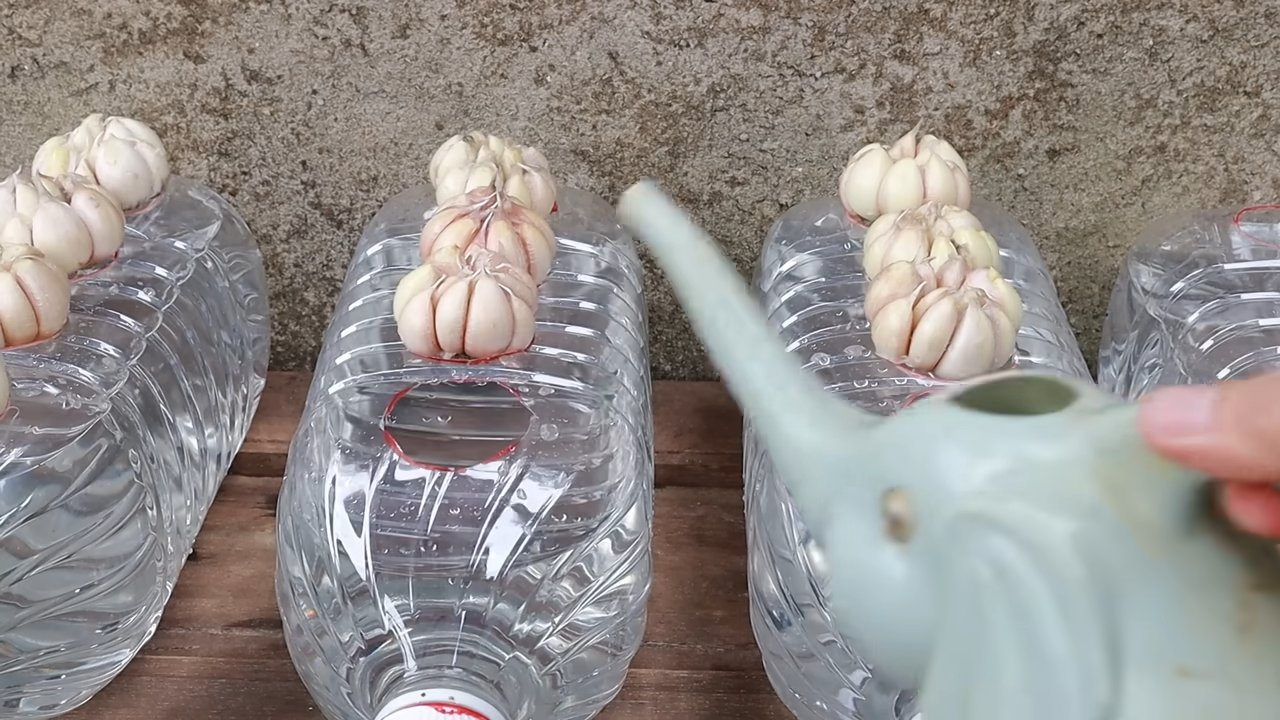
Growing Garlic Indoors Without Soil: A Fun DIY Experiment!
Hey there, fellow plant enthusiasts! Ever thought about growing garlic indoors, but without all the mess of soil? Well, you’re in for a treat! I’m going to walk you through a super cool and surprisingly easy method of growing garlic in water. It’s a fantastic way to get fresh garlic greens (which are delicious, by the way!) and it adds a touch of green to your kitchen. Let’s get started!
What You’ll Need
Before we dive in, let’s gather our supplies. This is a pretty low-key project, so you probably have most of this stuff already:
* Garlic Bulbs: Choose organic garlic if possible. You want firm, healthy-looking bulbs with no signs of mold or sprouting.
* Shallow Dishes or Jars: Think small bowls, ramekins, or even recycled yogurt containers. Anything that can hold water and support the garlic bulb.
* Water: Tap water is fine, but filtered water is even better.
* Optional: Small pebbles or glass beads (for added support and aesthetics).
* A Bright Spot: A windowsill or area with good indirect sunlight.
Choosing Your Garlic
Okay, so the garlic you choose is pretty important. Here’s what I look for:
* Firmness: The bulb should feel solid, not soft or squishy.
* No Mold: Avoid any bulbs with visible mold or discoloration.
* Healthy Cloves: The individual cloves should be plump and well-formed.
* Organic (Optional but Recommended): Organic garlic is less likely to have been treated with chemicals that could inhibit growth.
Step-by-Step Guide: Growing Garlic in Water
Alright, let’s get our hands dirty (well, not really, since we’re avoiding soil!). Here’s the breakdown:
1. Prepare the Garlic:
* Gently separate the cloves from the garlic bulb. Be careful not to damage the root end (the flat end where the roots will emerge).
* Leave the papery skin on each clove. This helps protect it from rotting.
* Select the largest, healthiest-looking cloves for the best results.
2. Prepare Your Container:
* Clean your chosen dish or jar thoroughly with soap and water.
* If you’re using pebbles or glass beads, add a layer to the bottom of the container. This will help support the garlic and prevent it from sitting directly in the water.
3. Position the Garlic:
* Place the garlic cloves, root-end down, in the dish or jar.
* Make sure the root end is facing down.
* If using pebbles, nestle the cloves amongst them for support.
4. Add Water:
* Carefully pour water into the container until it just covers the bottom of the garlic cloves. You don’t want to submerge the entire clove, just the root end.
* The water level should be maintained just below the point where the clove starts to curve upwards.
5. Find a Sunny Spot:
* Place your garlic setup in a bright spot, such as a windowsill that receives indirect sunlight.
* Direct sunlight can scorch the garlic, so avoid placing it in direct, intense sun.
6. Maintain and Observe:
* Change the water every 1-2 days to prevent mold and bacteria growth. This is super important!
* Keep an eye on the water level and add more as needed to keep the root end moist.
* Within a few days, you should start to see roots emerging from the bottom of the cloves and green shoots sprouting from the top.
7. Harvesting the Greens:
* Once the green shoots are several inches tall (usually after a week or two), you can start harvesting them.
* Use scissors to snip off the greens as needed.
* Leave about an inch of the green shoot intact so it can continue to grow.
* The garlic greens will have a mild garlic flavor and can be used in salads, soups, stir-fries, or as a garnish.
Troubleshooting Tips
Even with the best intentions, things don’t always go perfectly. Here are a few common issues you might encounter and how to deal with them:
* Mold: If you see mold growing on the garlic cloves, remove the affected cloves immediately and clean the container thoroughly. Make sure you’re changing the water frequently.
* Rotting: If the garlic cloves start to rot, it could be due to overwatering or poor air circulation. Make sure the water level is not too high and that the garlic has adequate ventilation.
* Slow Growth: If the garlic isn’t growing as quickly as you’d like, try moving it to a slightly warmer location or adding a diluted liquid fertilizer to the water.
* Yellowing Leaves: Yellowing leaves can indicate a lack of nutrients. Try adding a very diluted liquid fertilizer to the water. Be careful not to over-fertilize, as this can damage the garlic.
Maximizing Your Garlic Green Harvest
Want to get the most out of your soil-less garlic garden? Here are a few tips:
* Succession Planting: Start new garlic cloves every week or two to ensure a continuous supply of fresh greens.
* Fertilizing: While not strictly necessary, adding a very diluted liquid fertilizer to the water every few weeks can help boost growth. Use a balanced fertilizer and follow the instructions on the label carefully.
* Rotating Cloves: After harvesting the greens a few times, the garlic cloves will eventually exhaust their energy. Replace them with fresh cloves to keep your garden going.
* Experiment with Varieties: Try growing different varieties of garlic to see which ones produce the best greens. Softneck garlic varieties tend to be better for growing greens than hardneck varieties.
Using Your Garlic Greens
Now for the fun part – enjoying the fruits (or rather, greens!) of your labor! Garlic greens have a milder flavor than garlic cloves, making them a versatile addition to many dishes. Here are some ideas:
* Salads: Chop the greens finely and add them to salads for a subtle garlic flavor.
* Soups: Stir the greens into soups just before serving for a fresh, garlicky kick.
* Stir-fries: Add the greens to stir-fries along with other vegetables.
* Omelets and Frittatas: Mix the greens into omelets or frittatas for a flavorful breakfast.
* Garnish: Use the greens as a garnish for pasta dishes, pizzas, or other savory dishes.
* Pesto: Blend the greens with olive oil, nuts, cheese, and lemon juice to make a delicious garlic green pesto.
* Garlic Butter: Mix finely chopped garlic greens into softened butter for a flavorful spread.
Why Grow Garlic in Water?
You might be wondering, why bother growing garlic in water when you can just plant it in soil? Well, there are several advantages:
* It’s Mess-Free: No soil means no dirt to clean up.
* It’s Space-Saving: You can grow garlic in a small space, such as a windowsill or countertop.
* It’s Easy to Monitor: You can easily see the roots and shoots growing, which is fascinating.
* It’s a Fun Experiment: It’s a great way to learn about plant growth and experiment with different techniques.
* Fresh Greens Year-Round: You can enjoy fresh garlic greens even in the winter when it’s too cold to grow garlic outdoors.
A Few Extra Tips for Success
Here are a few more things I’ve learned along the way:
* Don’t Overcrowd: Give the garlic cloves enough space to grow. Overcrowding can lead to mold and rot.
* Use Clean Water: Always use clean water to prevent bacterial growth.
* Be Patient: It takes time for the garlic to grow, so don’t get discouraged if you don’t see results immediately.
* Observe Carefully: Pay attention to the garlic and adjust your care as needed.
* Have Fun!: Growing garlic in water is a fun and rewarding experience. Enjoy the process!
Beyond the Greens: What About the Garlic Bulb?
While the main goal here is to harvest the delicious greens, you might be wondering what happens to the garlic clove itself. Well, it won’t develop into a full-sized garlic bulb like it would in soil. The clove is essentially providing the initial energy for the green shoots to grow. After you’ve harvested the greens a few times, the clove will eventually exhaust its resources and start to shrivel. At that point, you can compost it or discard it.
However, sometimes, if you’re lucky, the clove might start to form a
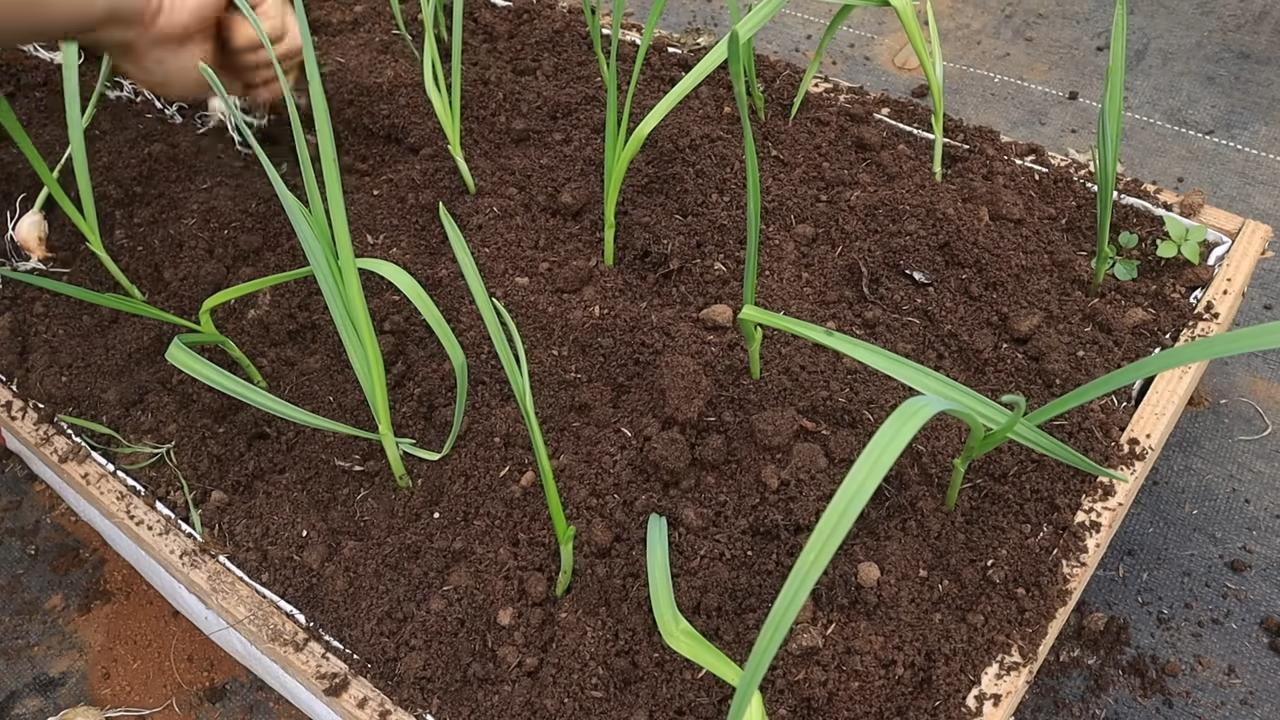
Conclusion
So, there you have it! Growing garlic without soil might seem unconventional, but as you’ve seen, it’s a surprisingly simple and incredibly rewarding process. This method not only allows you to enjoy fresh, flavorful garlic greens right from your kitchen, regardless of the season, but it also minimizes mess and eliminates the need for extensive gardening knowledge or equipment. It’s a fantastic way to introduce children to the wonders of plant growth, a space-saving solution for apartment dwellers, and a fascinating experiment for seasoned gardeners alike.
The beauty of this soiless garlic growing technique lies in its adaptability. Feel free to experiment with different types of containers – from repurposed glass jars to decorative ceramic pots. You can even try using different types of water, such as filtered water or rainwater, to see if it affects the growth rate or flavor of the greens. Consider adding a diluted liquid fertilizer every few weeks to boost growth, but be careful not to over-fertilize, as this can lead to nutrient burn.
Beyond the basic method, there are numerous variations you can explore. For instance, try using different varieties of garlic to compare their growth habits and flavor profiles. Some varieties might produce more robust greens, while others might offer a more delicate taste. You can also experiment with different lighting conditions. While indirect sunlight is generally sufficient, you might find that supplementing with a grow light during the darker months of the year can significantly enhance growth.
Another exciting variation is to focus on growing garlic scapes, the curly flower stalks that emerge from hardneck garlic varieties. These scapes are a culinary delicacy, offering a milder, more nuanced garlic flavor than the bulbs themselves. To encourage scape production, simply allow the garlic plants to grow a bit longer and provide them with slightly more light.
But the most important thing is to just give it a try! Don’t be intimidated by the prospect of growing garlic without soil. It’s a forgiving process, and even if you encounter a few hiccups along the way, you’re sure to learn something valuable. The satisfaction of harvesting your own fresh garlic greens, grown right in your own home, is truly unparalleled.
We wholeheartedly encourage you to embark on this exciting journey of soiless garlic growing. Once you’ve experienced the joy of harvesting your own homegrown garlic greens, we’re confident that you’ll be hooked. And don’t forget to share your experiences with us! We’d love to hear about your successes, your challenges, and any creative variations you’ve discovered. Share your photos and stories on social media using [Your Hashtag Here], and let’s inspire others to embrace the wonders of soiless gardening. Happy growing!
Frequently Asked Questions (FAQ)
What kind of garlic should I use for soiless growing?
You can use almost any type of garlic for soiless growing, but softneck varieties tend to be more readily available in grocery stores and are a good starting point. Hardneck varieties will also work and may even produce scapes, which are a delicious bonus. Look for firm, plump cloves that are free from blemishes or signs of mold. Organic garlic is always a good choice, as it hasn’t been treated with chemicals that could inhibit growth. Remember that the flavor of the greens will be similar to the flavor of the garlic bulb, so choose a variety you enjoy.
How much light does soiless garlic need?
Garlic greens grown without soil thrive in bright, indirect sunlight. A windowsill that receives morning sun is ideal. Avoid placing them in direct, intense sunlight, as this can scorch the leaves. If you don’t have access to a sunny windowsill, you can supplement with a grow light. A simple fluorescent or LED grow light, positioned a few inches above the plants, can provide the necessary light for healthy growth, especially during the winter months.
How often should I change the water?
It’s important to change the water regularly to prevent the growth of bacteria and algae. Aim to change the water every 2-3 days. When changing the water, gently rinse the roots to remove any debris. This will help keep the water clean and clear, and it will also promote healthy root growth. If you notice the water becoming cloudy or discolored more quickly, you may need to change it more frequently.
Can I eat the garlic bulb after growing the greens?
While it’s technically possible to plant the sprouted garlic bulb in soil after harvesting the greens, the bulb will likely be depleted of energy and may not produce a full-sized head of garlic. The primary purpose of this method is to grow the greens, not to cultivate a full garlic bulb. If you’re interested in growing garlic bulbs, it’s best to plant unsprouted cloves directly in soil in the fall.
How long does it take for the garlic greens to grow?
You should start to see sprouts within a few days of placing the garlic cloves in water. The greens will typically reach a harvestable size (around 4-6 inches tall) within 1-2 weeks. The growth rate will depend on factors such as the variety of garlic, the amount of light, and the temperature.
Can I use tap water for soiless garlic growing?
Tap water is generally fine to use, but it’s best to let it sit out for 24 hours before using it to allow the chlorine to dissipate. Alternatively, you can use filtered water or rainwater. Avoid using softened water, as it contains high levels of sodium, which can be harmful to plants.
How do I harvest the garlic greens?
To harvest the garlic greens, simply snip them off with scissors or kitchen shears, about an inch above the base of the clove. This will allow the greens to continue to grow. You can harvest the greens multiple times from the same clove.
What can I do with the garlic greens?
Garlic greens have a mild, garlicky flavor and can be used in a variety of dishes. They can be chopped and added to salads, soups, stir-fries, and omelets. They can also be used as a garnish or blended into pesto. The possibilities are endless!
My garlic cloves are rotting. What am I doing wrong?
If your garlic cloves are rotting, it’s likely due to overwatering or poor drainage. Make sure that the base of the clove is submerged in water, but not completely covered. Also, be sure to change the water regularly to prevent the growth of bacteria. If you’re using a container without drainage holes, be careful not to add too much water.
Can I grow other herbs or vegetables using this soiless method?
Yes, you can! Many herbs and vegetables can be grown using similar soiless methods. Some popular choices include basil, mint, chives, and lettuce. The key is to provide the plants with adequate light, water, and nutrients. Research the specific needs of each plant to ensure optimal growth.

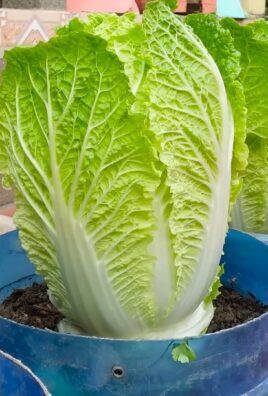
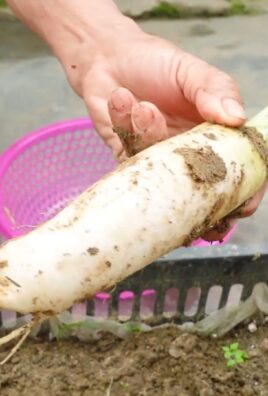
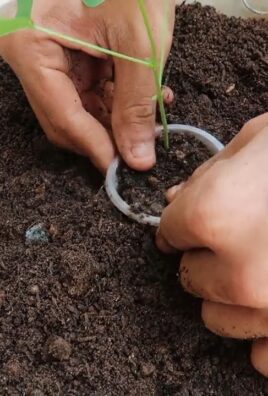
Leave a Comment